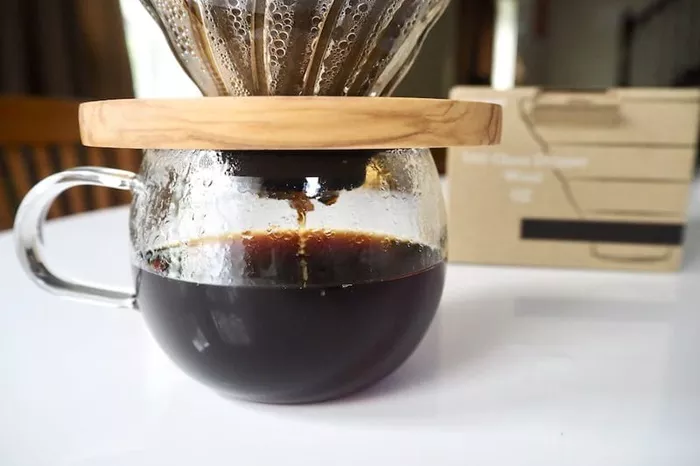A cup of coffee is meant to provide a balanced flavor, with a rich mix of acidity, sweetness, and bitterness. However, at times, coffee can taste sour, which can be an unpleasant experience for many. This sourness is often a result of various factors, including the brewing process, the characteristics of the coffee beans, and the overall freshness of the beans. Let’s explore the main reasons behind sour coffee and how to avoid it.
Reasons for Sour Taste in Coffee
The sour taste in coffee can stem from several key factors, most notably under-extraction. Under-extraction occurs when the brewing process is too short, causing insufficient extraction of flavor compounds from the coffee grounds. This results in an imbalance where the acids and certain bitter compounds are over-represented, leading to a sour profile.
The Role of Coffee Bean Acidity
Another primary contributor to sourness in coffee is the natural acidity of the beans. Acidity in coffee is not necessarily a negative trait—it can create a vibrant, lively cup, especially in specialty coffees. However, beans with a higher natural acidity can sometimes be perceived as sour, especially if not brewed correctly. Beans from certain regions are particularly known for their bright, acidic flavor profiles.
Bean Characteristics: Origin, Variety, and Processing
The origin of the coffee beans plays a significant role in their acidity and sourness. For example, coffee beans from Ethiopia and Kenya are renowned for their high acidity and fruity, tangy flavors. These regions produce beans with a distinctive “bright” profile, which can lean towards a sour taste if not brewed properly. Additionally, the processing method—whether washed, natural, or honey-processed—also affects the final flavor. Washed coffees, in particular, tend to showcase brighter acidity, which can sometimes lead to sourness.
The variety of the beans also influences their inherent acidity. For instance, Arabica beans, which are commonly grown at higher altitudes, tend to have more pronounced acidity compared to Robusta beans, which are often lower in acidity and have a more robust, bitter flavor.
Brewing Factors: How Method and Variables Affect Taste
Brewing factors such as grind size, water temperature, and brew time all contribute to the final taste of your coffee. If the grind is too coarse or the brewing time too short, under-extraction can occur, bringing out unwanted sour notes. Likewise, brewing at a lower water temperature can fail to extract the full spectrum of flavors, especially the sweeter, more balanced notes, leaving behind a sour, acidic taste.
To combat this, consider using a finer grind for your coffee, as this will increase the surface area and improve extraction. Additionally, slightly increasing the brewing temperature to around 200°F (93°C) can help balance out the acids and bring out a fuller, richer flavor.
Roast Level and Its Impact on Coffee Flavor
Roast level plays a major role in the overall flavor profile of coffee. Lighter roasts are known for their higher acidity and bright, fruity notes, which can sometimes taste sour, especially when brewed improperly. On the other hand, darker roasts tend to have more developed bitter flavors and a lower overall acidity.
If you are sensitive to sourness, consider opting for a medium to dark roast. These roasts will have reduced acidity and a smoother, more balanced flavor. For those who enjoy the bright notes that come with lighter roasts, proper brewing techniques will be key to minimizing unwanted sourness.
Proper Coffee-to-Water Ratio: Ensuring Balanced Extraction
The coffee-to-water ratio is crucial to achieving the ideal cup of coffee. Using too little coffee can result in under-extraction, leading to sourness, while too much coffee can result in over-extraction, bringing out more bitter flavors. The general recommendation for most brewing methods is a ratio of 1:15 or 1:16, but this can vary depending on personal preferences and brewing methods.
Experimenting with different ratios to find the one that works best for your taste buds will ensure you avoid under-extraction and the resulting sourness.
Storage and Freshness: Why Freshness Matters
Freshness plays a significant role in the flavor of coffee. Stale beans can develop off-flavors, including sour notes that may have not been present when the beans were fresh. As coffee ages, the complex flavors begin to degrade, leaving behind undesirable taste profiles. To maintain freshness, store your coffee beans in an airtight container in a cool, dry place away from direct sunlight. Ideally, use your beans within two weeks of opening to ensure the best flavor.
Conclusion
Sour coffee is often the result of a combination of factors, including under-extraction, high-acid beans, improper brewing methods, and poor storage. By understanding the origins of this sourness and adjusting brewing variables like grind size, water temperature, and coffee-to-water ratio, you can achieve a cup that balances acidity and sweetness without veering into unpleasant sourness. Whether you prefer the bright, tangy profile of a light roast or the smooth, mellow taste of a darker brew, experimenting with these elements will help you tailor your coffee to suit your taste preferences.
Related topics:
- Why Should You Drink Coffee Before a Workout?
- Why No Coffee on the Carnivore Diet?
- Why Shade-Grown Coffee?


